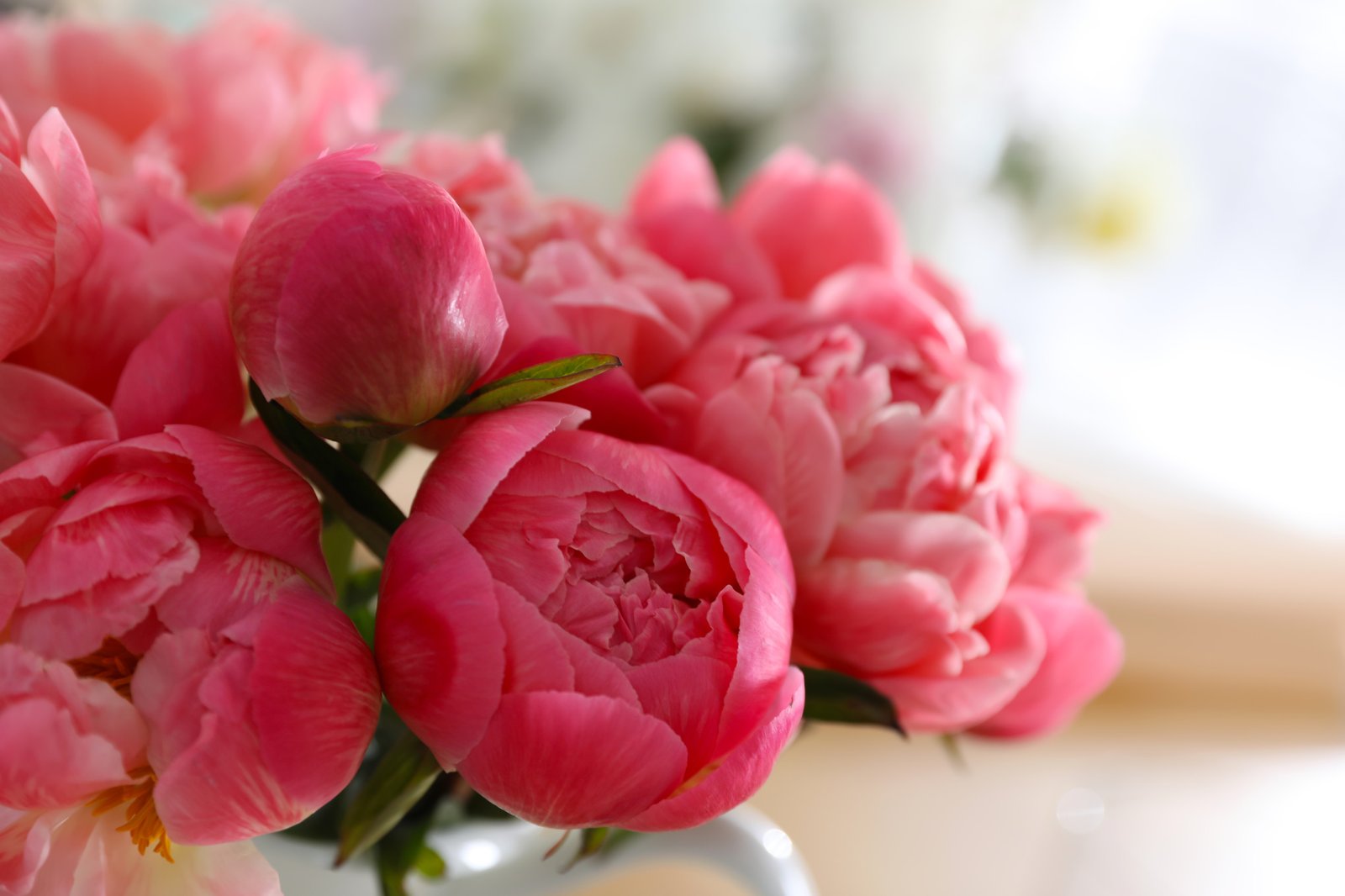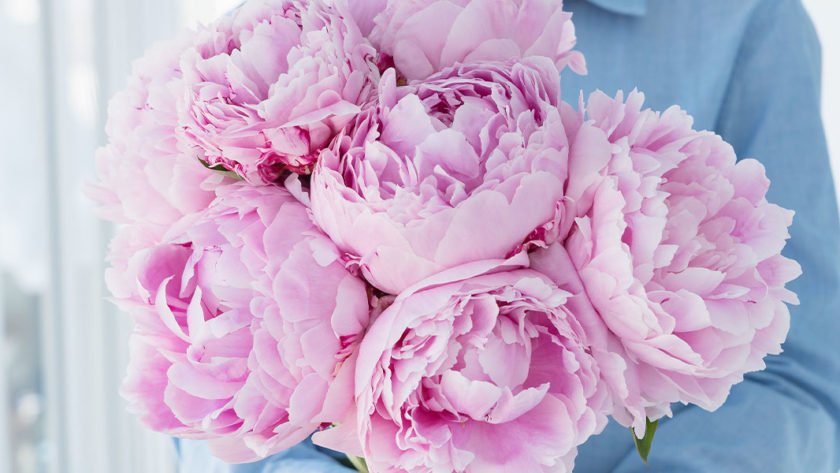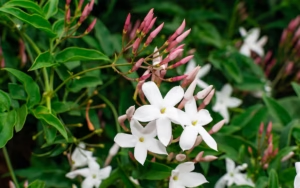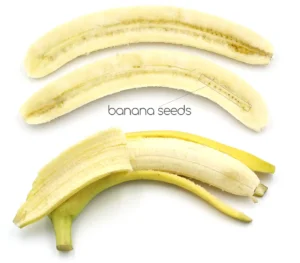Peonies are one of the most beloved flowers in the garden, known for their large, fragrant blooms and their ability to thrive for years. Whether you’re an experienced gardener or just starting out, peonies can be an excellent addition to your garden. They come in various types, colors, and sizes, and their care is relatively easy once you know the basics. In this detailed guide, we will walk you through everything you need to know about growing and caring for peonies, from planting to pruning and everything in between.
Peony Overview
| Common Name | Peony |
| Botanical Name | Paeonia |
| Family | Paeoniaceae |
| Plant Type | Perennial |
| Mature Size | 2 to 4 feet tall and 3 to 4 feet wide |
| Sun Exposure | Full sun to partial shade |
| Soil Type | Well-draining, loamy soil |
| Soil pH | Slightly acidic to neutral (6.0 to 7.0) |
| Hardiness Zones | 3 to 8 |
| Native Area | Europe, Asia, and North America |
| Toxicity | Mildly toxic to pets (especially roots) |
Planting and Transplanting Peonies
Planting peonies is the first step to ensuring healthy growth and beautiful blooms. Whether you are starting with bare root peonies or transplants, the process remains relatively the same.
Choosing the Right Location
Peonies prefer a sunny spot in the garden. They need at least six hours of direct sunlight a day to thrive. However, they can tolerate partial shade, but it might result in fewer blooms. Choose a location with well-draining soil to prevent waterlogged roots.
Preparing the Soil
Peonies are not very picky about soil, but they do best in rich, well-drained, loamy soil. Before planting, improve the soil by adding compost or well-rotted manure to provide the necessary nutrients. Avoid soil that is too clayey or too sandy, as this can hinder proper growth.
Planting Bare Root Peonies
When planting bare root peonies, dig a hole that is about 12 inches deep and 18 inches wide. Place the root in the hole with the eyes (small pink or red buds) facing upward. The eyes should be about 1 to 2 inches below the soil surface. Gently cover the root with soil, firm it down, and water thoroughly.
Transplanting Established Peonies
If you need to transplant established peonies, it’s best to do so in the fall, after they’ve finished blooming. Dig around the plant carefully, making sure to retain as much of the root system as possible. Replant in a new location following the same method as above, and water well after planting.
Peony Care
Once planted, peonies are relatively easy to care for. With proper care, they can live for decades, often becoming more beautiful as they age.
Watering
Peonies need a moderate amount of water. While they like moist soil, they do not tolerate soggy conditions. Water your peonies deeply once a week during dry spells, ensuring that the water reaches the root zone. Be careful not to let water sit around the roots, as this can lead to rot.
Fertilizing
Fertilizing peonies is important for healthy growth, especially if your soil is lacking in nutrients. In early spring, apply a balanced fertilizer to give your peonies a boost as they begin to grow. Once the flowers bloom, you can stop fertilizing. Avoid high-nitrogen fertilizers, as they can promote leaf growth at the expense of blooms.
Mulching
Applying mulch around your peonies helps retain moisture, suppress weeds, and regulate soil temperature. Use organic mulch, such as shredded bark or compost, and apply it around the base of the plant. Make sure the mulch does not touch the stems directly to avoid rot.
Types of Peonies
Peonies come in several different types, each with its unique characteristics. Understanding the different types can help you choose the right variety for your garden.
Herbaceous Peonies
These are the most common type of peony. Herbaceous peonies die back to the ground each fall, with new shoots emerging in the spring. They are prized for their large, colorful blooms, which come in shades of pink, red, white, and yellow.
Tree Peonies
Tree peonies have woody stems that remain above ground year-round. They tend to be more expensive and slower to establish than herbaceous peonies, but their large, vibrant blooms are worth the wait. Tree peonies are also typically more heat-tolerant than herbaceous varieties.
Intersectional Peonies
A hybrid of herbaceous and tree peonies, intersectional peonies combine the best features of both. They have the sturdy, woody stems of tree peonies but die back in the winter like herbaceous varieties. These peonies are often more vigorous and have large, brightly colored flowers.
Pruning Peonies
Pruning is an important part of peony care, helping to maintain plant health and improve flowering.
When to Prune
Prune peonies in the early spring, just as new growth starts to emerge. Remove any dead or damaged stems, and trim back any old growth to encourage new shoots. After the flowers bloom, deadhead the spent blossoms to keep the plant looking tidy.
How to Prune
When pruning, use sharp, clean garden shears. Cut back stems that have finished flowering, but avoid cutting back too far into the plant, as you might remove potential flower buds for the next season. In the fall, after the plant has died back, cut the stems down to the ground level to prevent disease buildup.
Propagating Peonies
Peonies can be propagated in several ways, including division and from seeds. Propagating peonies is a great way to expand your garden without purchasing new plants.
Dividing Peonies
The best time to divide peonies is in the fall, when the plant has finished blooming. Dig up the root ball carefully and divide it into smaller sections. Each section should have at least three eyes (buds) to ensure successful growth. Replant the divisions immediately, following the same planting guidelines mentioned earlier.
Propagating Peonies from Seeds
Although growing peonies from seeds is possible, it is a slow process. Peony seeds take a long time to mature and may take several years to bloom. If you wish to grow peonies from seed, collect seeds after the flowers fade and sow them in a cold frame or container. Keep the seeds moist and give them a cold period to break dormancy.
How to Grow Peonies from Seeds
Growing peonies from seeds can be a rewarding but patient process. Peony seeds require cold stratification before they can germinate, which means they need to be exposed to cold temperatures for several weeks.
Collecting Seeds
Once your peonies have finished blooming, you can collect the seeds from the flower heads. Allow the seed pods to dry out on the plant before harvesting. Each pod contains several seeds that you can plant.
Stratifying Seeds
Before planting peony seeds, they need to be stratified, which mimics the natural cold period they would experience in the wild. Place the seeds in a sealed plastic bag with a little moistened sand and store them in the refrigerator for about 12 weeks. This will help break the seed’s dormancy.
Planting Seeds
After stratification, plant the seeds in a well-draining seed-starting mix in a container. Keep the soil moist and place the container in a warm, sunny spot. Germination can take several months, so be patient. Once the seedlings are large enough, they can be transplanted into the garden.
Potting and Repotting Peonies
If you live in an area with harsh winters or have limited garden space, growing peonies in pots can be an excellent solution. Container gardening allows you to control the growing environment, and you can easily move the plant indoors during the colder months.
Choosing the Right Pot
Choose a large pot, at least 18 inches in diameter, with drainage holes. Peonies have deep roots, so the pot should be deep enough to accommodate the root system. Use a high-quality, well-draining potting mix to ensure the peony thrives.
Repotting Peonies
If your peony outgrows its container or you notice it’s not blooming as well as it should, it might be time to repot. Repot your peony every 3-5 years, typically in early spring, just before new growth starts. Gently remove the plant from its pot, trim any damaged roots, and place it in a slightly larger container with fresh soil.
Overwintering Peonies
In colder climates, overwintering peonies is important to protect them from freezing temperatures. While peonies are quite hardy, they can benefit from a little extra protection during the winter months.
Mulching
Apply a thick layer of mulch around the base of your peony plants in the fall, especially if you live in a zone where temperatures drop below freezing. Mulch helps insulate the roots and keeps the soil temperature more stable.
Cutting Back
After the first frost, cut back any remaining stems to the ground. This helps prevent disease buildup and prepares the plant for dormancy.
Protecting Container Plants
If your peony is growing in a container, bring it indoors or place it in a sheltered area during the winter. You can also bury the container in the ground to protect the roots.
Common Problems with Peonies
While peonies are relatively low-maintenance, they can still experience a few common problems.
Yellowing Leaves
If the leaves of your peony turn yellow, it could be a sign of poor soil drainage, overwatering, or nutrient deficiencies. Ensure the plant is planted in well-draining soil and consider adding compost to improve the soil’s fertility.
Powdery Mildew
Peonies are susceptible to powdery mildew, a fungal disease that causes a white, powdery coating on the leaves. To prevent this, make sure the plant has good air circulation and avoid overhead watering.
Flower Buds Failing to Open
If the flower buds fail to open, it may be due to overcrowding, poor soil, or incorrect planting depth. Ensure the plant has enough space and that the eyes are not planted too deep.
Common Pests & Plant Diseases
Like any plant, peonies can fall victim to pests and diseases.
Aphids
Aphids are small, green insects that feed on the sap of peonies. They can be controlled by spraying the plant with a mixture of water and dish soap or by introducing natural predators like ladybugs.
Botrytis Blight
This fungal disease causes grayish mold on the petals and leaves of peonies. To prevent botrytis blight, avoid overhead watering and remove any infected plant parts immediately.
Root Rot
Root rot is a common problem when peonies are planted in poorly-draining soil. To avoid root rot, ensure the soil is well-draining and avoid overwatering.
How to Get Peonies to Bloom
Peonies are relatively easy to grow, but getting them to bloom can sometimes be a challenge. Here are some tips to encourage peonies to flower:
Proper Planting Depth
Plant your peonies with the eyes (buds) no deeper than 2 inches below the soil surface. Planting too deeply is a common cause of poor blooming.
Adequate Sunlight
Peonies need full sun to bloom well. If they are planted in too much shade, they may grow but not produce many flowers.
Patience
Peonies can take a few years to establish and bloom, especially if you’re starting from bare roots. Be patient, and don’t expect a full display of flowers immediately after planting.
FAQ
Q: Can I plant peonies in the fall?
A: Yes, fall is actually the best time to plant peonies, as it gives them time to establish roots before the colder months.
Q: Why isn’t my peony blooming?
A: There could be a few reasons, including improper planting depth, lack of sunlight, or the plant being too young. Be patient, and ensure the plant is getting the right care.
Q: How long do peonies live?
A: Peonies are incredibly long-lived and can thrive for decades with proper care. Some plants have been known to live for over 50 years.
Read also: Paperwhites: How to Grow and Care for Paperwhites










